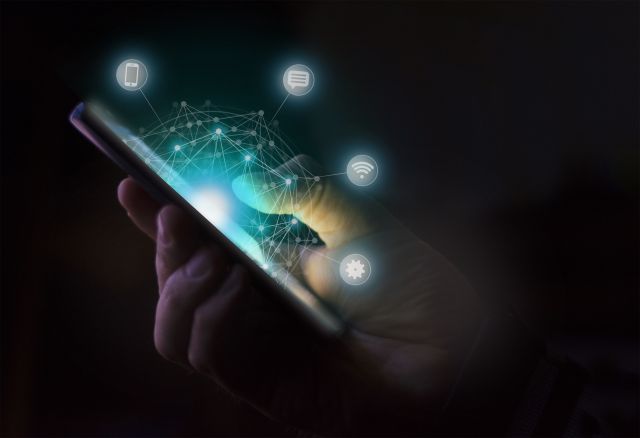Disability Rights Florida Blog
By Keith Casebonne
In the not-so-distant past, assistive technology (AT) devices were usually quite expensive, often difficult to acquire, and sometimes bulky and cumbersome. If you could benefit from AT, you generally had to request it through a case manager or provider, wait for approval, appeal a denial, and maybe not have much say in what you eventually receive.
While there are still times when a dedicated AT device is necessary or recommended, the rise of the smartphone and tablet age has changed the way we look at AT. Often there is an app for less than $100 that can do the same or similar job as a multi-thousand-dollar dedicated device, which makes approvals and delays much less of a factor. And one device, such as a $500 tablet, can provide a number of functions that would have taken several dedicated devices to accomplish in the past.
 What’s also special about today’s mobile devices is that they bring awareness of AT and accessibility to the masses. As mobile devices and their operating systems mature, they add features that you never knew you needed until you had them. For example, someone who never realized they could use a simple magnifier app now has one built-in to their device and can use it anytime they want.
What’s also special about today’s mobile devices is that they bring awareness of AT and accessibility to the masses. As mobile devices and their operating systems mature, they add features that you never knew you needed until you had them. For example, someone who never realized they could use a simple magnifier app now has one built-in to their device and can use it anytime they want.
Accessibility Built-In
I’ll talk about some great AT apps shortly, but what is already built-in to these new devices is impressive. Screen reading software is standard on both iOS and Android devices, rivaling the options available on computers. They both also come with sound recognition, alerting you to alarms, sirens, animal noises, and more. You can transcribe live conversations or provide on-the-fly captions for any media playing on an Android device. iOS devices will recognize when someone is using sign language on FaceTime and automatically make them larger than other participants. And both Siri on iOS and Google Assistant on Android can provide answers to spoken requests, take dictation, and execute commands on your device for you.
Apps Outside the Box
Where mobile devices really shine are with third-party apps. Developers are constantly releasing new apps for both iOS and Android, and the options border on limitless. Here are some standout apps available:
- Be My Eyes is a free app that connects people who are blind with sighted individuals. Through a video-based session, these volunteers provide visual assistance with things like checking expiration dates, reading instructions, or navigating new environments.
- RogerVoice enables people who are deaf or hard of hearing to make phone calls. Using voice recognition, the user will be able to read in real-time what the person on the phone is saying. You can also type your responses, which are then spoken back to the person on the other end of the call.
- WheelMate aims to help people find accessible restrooms and parking spots. The data is crowdsourced, which means you can add new information or rate existing information to make the app better for others.
- Petralex uses your smartphone and earbuds as a customizable hearing aid. You can create different profiles for different scenarios (for example, at home vs. at a movie theater), and provides speech recognition, noise suppression, and more.
- Avaz AAC (Augmentative and Alternative Communication) is a picture and text-based app that empowers children and adults with complex communications needs to express themselves and learn. It has a wide range of features, is extremely customizable, and can replace a dedicated AAC device that could cost thousands of dollars.
Your AT Swiss Army Knife
This post barely scrapes the surface of the myriad of AT apps and options available for mobile devices. Hopefully it gets you started thinking about ways you or a family member or friend can use your smartphone or tablet to better experience the world around you.
You can also learn more about Assistive Technology in the Disability Topics section of our website.
Now it’s your turn. Share with us your stories and experiences in the comments below. What AT features or apps do you use? Are there features or apps you’d like to see in the future? We want to hear from you!
 Keith Casebonne is the Technology and Communications Manager at Disability Rights Florida. He manages social media, website development, graphic design, network administration, computer security, technical support, and digital accessibility. He joined DRF in 2002 and has an M.A. in Health Science from Louisiana State University Medical Center.
Keith Casebonne is the Technology and Communications Manager at Disability Rights Florida. He manages social media, website development, graphic design, network administration, computer security, technical support, and digital accessibility. He joined DRF in 2002 and has an M.A. in Health Science from Louisiana State University Medical Center.
Please note that Disability Rights Florida does not endorse any specific products or services mentioned in this blog post.
Leave Us Your Comments
Please do not leave requests for assistance in the comments. Blog comments are not monitored by intake staff and your request may not be seen. Visit our Online Intake Page to request our services.
Commenting is not available in this channel entry.
Comments
Please help me find financial help for these disabilities-technology/apps.
I’ m an SSI BENEFICIARY (Over-Sixty)disabled-senior trying time relocate your Silver Springs Florida [to be near my two-daughters for physical-assistance] while I seek disability employment [and I’m seeking a way of getting liberated/off SSI, and hopefully-achieve(full)independence, too]!
Can your services help(ASAP), I may be homeless-soon[if my oldest son and my new daughter-in-law desert-me, as I feel they may do soon{since they are moving most of their belongings out of their house]12/30/20!
By Joyce on Dec 31, 2020
The best thing to do would be to contact us at 800-342-0823 or online at disabilityrightsflorida.org/intake. An advocacy specialist will discuss your issues with you and determine if we can assist. And if we cannot, we’ll point you in the right direction.
By Disability Rights Florida on Jan 04, 2021